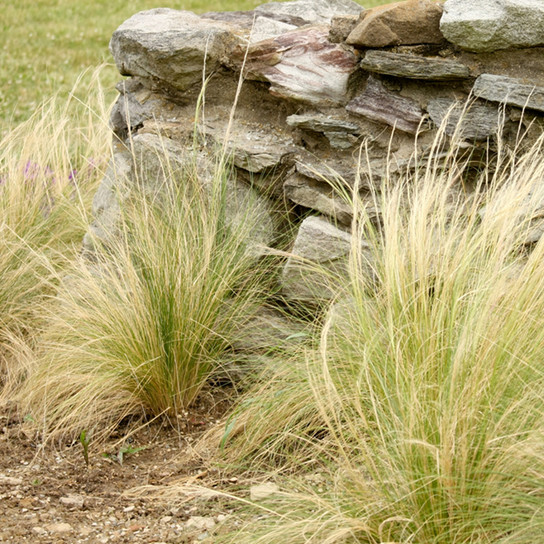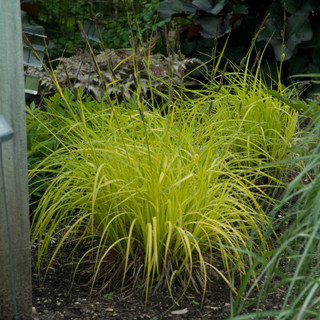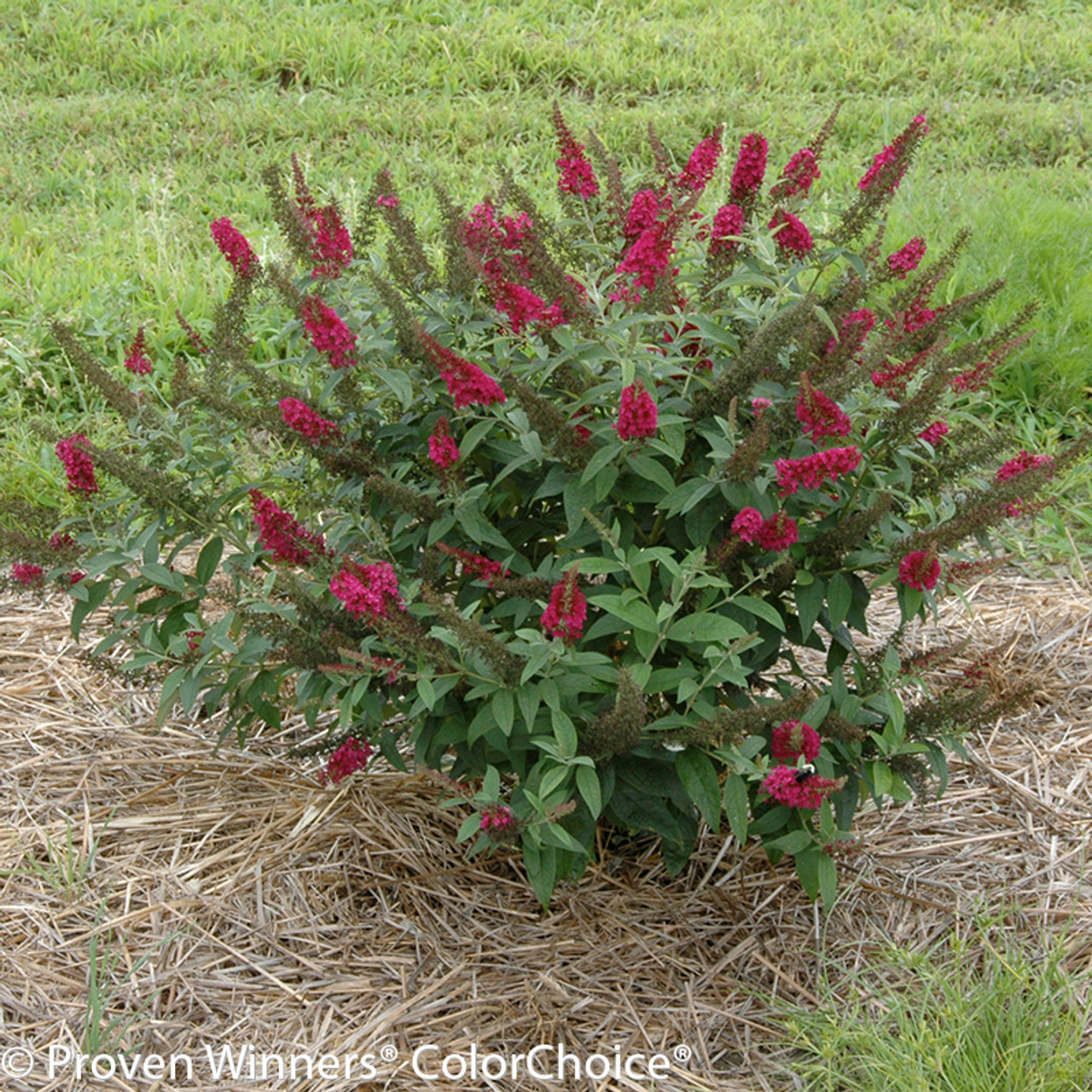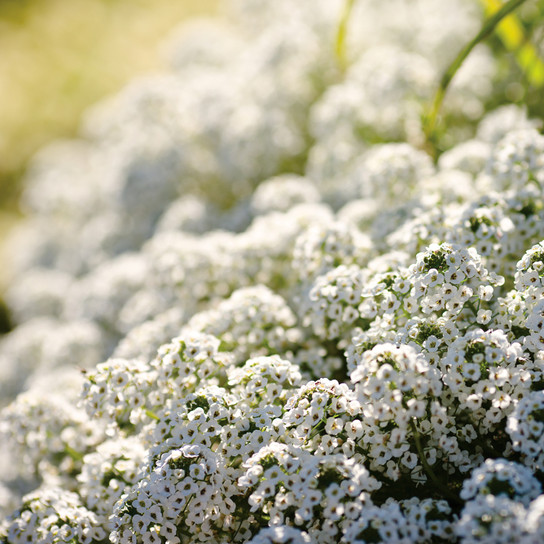
Ornamental Grasses
Ornamental Grass Types
Uses:
- Garden Borders & Edges
- Add Vertical Interest
- Groundcover
- Container Gardens
Features:
- Drought & Heat Tolerant
- Deer & Rabbit Resistant
- Low Maintenance & Adaptable
- No Fertilizer or Pesticide Needed
Sunlight:
- Mostly Full Sun
- Sunlight Conditions Depend on Type
Benefits:
- Prevents Erosion
- Habitat for Wildlife
- Adds Movement in the Wind
- Four-Season Interest
Ornamental grasses are a great addition to any landscape. The plants are low maintenance and provide year-round interest. Several types are available, ranging in size, color, and shape. Short sedge grass works well as a groundcover or in flower pots, whereas tall maiden grass provides height to a landscape and can be used as a privacy screen. There is an ornamental grass for every application and several colors to choose from including pink, red, blue, and purple.
Why Buy Ornamental Grass Online?
When xeriscaping, you can add plenty of interest with varied textures and heights by including a few ornamental grasses in your landscape. We’re always tempted to think first about flower color, but less about interesting foliage. Placing a few ornamental grasses in a xeric landscape or container can add nearly as much impact as a pop of purple with less watering and maintenance.
Choose an ornamental grass that is native to your area, or a similar climate or condition, in place of a shrub or perennial flower. One of our favorite features of grasses is that they can grow tall and move in the wind. In containers, they often add height or contrast to draping and flowering annuals. Warm-season grasses seed out and provide winter interest, even if the foliage browns. If you choose one that’s not native to your area make sure it can at least survive with less water or other conditions that differ.
About Ornamental Grasses

Sedge, Rush, Reed Grass, Maiden Grass, Egyptian Papyrus, Fountain Grass, Bluestem, Switch Grass, Fescue, Lilyturf
Worldwide
Ornamental Grasses
Herbaceous
3 - 10
Tan, Green, Yellow, Pink, Silver
Spring, Summer
Clumping, Spreading
Butterflies, Small Mammals, Songbirds
Drought, Heat, Humidity, Poor soil
Deer, Disease, Pests
How To Use Ornamental Grasses In The Garden
These graceful plants supply interesting textures all year and ask for little more than a trim in late winter. Many transition through alluring color phases, moving from soft greens to rich golds, delivering a dynamic presence as the seasons progress. Their sturdy nature and deep roots deter pests and thrive through dry spells, easing up on maintenance duties. Plus, ornamental grasses can create welcoming habitat for birds and beneficial insects.
Place taller varieties as natural partitions for privacy, or let them flow en masse to simulate a gentle meadow effect. Employ their slender, vertical lines to visually connect different areas of a garden, or nestle shorter kinds near stones and companion perennials for a pleasing tapestry. Used as groundcover, grasses can stabilize soil and reduce erosion. In small spaces, pots offer a simple way to adorn patios and doorways with soft arches and feathery seed heads.
Types of Ornamental Grasses
| Type | Scientific Name | Native | Foliage | Flowers | Uses | Features |
|---|---|---|---|---|---|---|
| Big Bluestem | Andropogon gerardii | Central & Eastern North America | Blue-green turning maroon-tan in fall (4-8 ft) | Purplish-red “turkey-foot” spikes | Prairie/restoration, screens, large accents | Drought & deer resistant; wildlife/host plant; winter color |
| Little Bluestem | Schizachyrium scoparium | Most of U.S. & N. Mexico | Blue-green clumps, copper-red in fall/winter | Purplish-bronze racemes | Dry meadows, rain & rock gardens, naturalizing | High drought tolerance; fluffy winter seed; skipper host; bird seed |
| Switchgrass | Panicum virgatum | North American Tallgrass Prairie | Medium-green aging to yellow-orange (3-6 ft) | Airy pink-tinged panicles | Naturalize, rain gardens, erosion control, prairie | Handles wet or dry; bird cover/seed; strong winter interest |
| Maiden (Chinese Silver) Grass | Miscanthus sinensis | Eastern Asia | Arching green or variegated leaves, gold-tan in fall (4-9 ft) | Pink-to-red feathery plumes | Specimens, meadows, dried bouquets | Showy plumes, winter presence, heat/ drought tolerant |
| Fountain Grass | Pennisetum alopecuroides | East Asia | Deep green blades, bronze-gold fall (2-4 ft) | Bottle-brush purple-tan spikes | Borders, massing, large pots | Soft motion, deer & drought resistant, three-season color |
| Papyrus (Paper Reed) | Cyperus papyrus | Tropical Africa & Nile basin | Tall triangular stems with umbrella-like tufts, evergreen (4-9 ft) | Green-brown clusters on ray tips | Water gardens, ponds, dramatic containers | Thrives in standing water; bold texture; historic utility |
| Japanese Forest Grass | Hakonechloa macra | Central Japan | Bright-green or gold/variegated, red-pinkish in fall (1-1.5 ft) | Fine yellow-green sprays | Shade groundcover, path/rock edge, containers | Shade-loving, deer tolerant, bamboo-like form, subtle fall color |
| Creeping Liriope | Liriope spicata | China & Vietnam | Narrow evergreen blades, spreads by rhizomes (9-15 in) | Pale lavender-white spikes | Groundcover, slope/erosion, under trees | Evergreen, tough, drought/rabbit/deer resistant |
| Big Blue Liriope | Liriope muscari | China, Taiwan, Japan | Strap-like evergreen tufts (12-18 in) | Showy violet-purple wands | Edging, small groundcover, pots | Heat/humidity tolerant; winter berries; slower spread than L. spicata |
| Sedge | Carex spp. | Worldwide; many N. American natives | Fine to broad blades, many in shades of green, blue, bronze or variegated | Small green/brown spikelets | Shade or sun groundcovers, rain gardens, bioswales, lawn alternative | Deer-resistant; thrive in wet or dry soils; excellent erosion control; host > 30 butterfly species |
Ornamental Grass Care
Ornamental grasses should be planted in well-draining soil, as they prefer not to sit in waterlogged conditions. While they are drought-tolerant once established, regular watering during the first growing season helps develop a strong root system. These grasses thrive in full sun but can tolerate partial shade. Fertilization is generally unnecessary; however, if growth appears sluggish, a light application of balanced fertilizer in early spring can be beneficial.
Pruning ornamental grasses involves cutting back the foliage to a few inches above the ground in late winter or early spring before new growth emerges. In colder climates, leaving the foliage intact over winter provides insulation and visual interest; prune in early spring instead. When growing in containers, select a pot with adequate drainage and choose a compact variety suitable for confined spaces. Regular watering is essential for container-grown grasses, as they dry out faster than those in the ground.
Learn More About Ornamental Grass Care

Ornamental Grass Companion Plants
Pair ornamental grasses with perennials and shrubs that thrive in similar conditions—full sun and well-drained soil. These grasses add height and texture while enhancing fall foliage. Great companion plants include butterfly bush, false cypress, Japanese maples, coral bells, phlox, coneflower, and alyssum. For a cohesive look, choose color combinations that set the desired mood or theme. Perfect for garden beds or patio planters!


























